What to Look Out for When Buying Vintage Watches
by Maz Panayi
Maz Panayi is a watchmaker and founder of the excellent watchmaker resource site WatchmakingTools.com. This article is republished here with permission.
——————————————————–
Any watch collector values a vintage timepiece as part of their collection but the world of vintage watches can be a minefield to navigate. Vintage watches continue to be a hot topic and are highly sought, but with the demand so high today many dishonest traders have floated to the surface.
The pool of genuine traders is now contaminated with many hoping to dupe new buyers and make a quick buck. It is more important than ever to fully analyze the timepiece you are interested in and accurately evaluate the situation.
Dishonest traders are great salespeople and can easily pull the wool over your eyes so as a buyer it is essential to know what you are looking for and what you are talking about. With a bit of education in buying vintage watches, you can knock back any dodgy watch sellers and find yourself a beautiful timepiece that is a worthy investment.
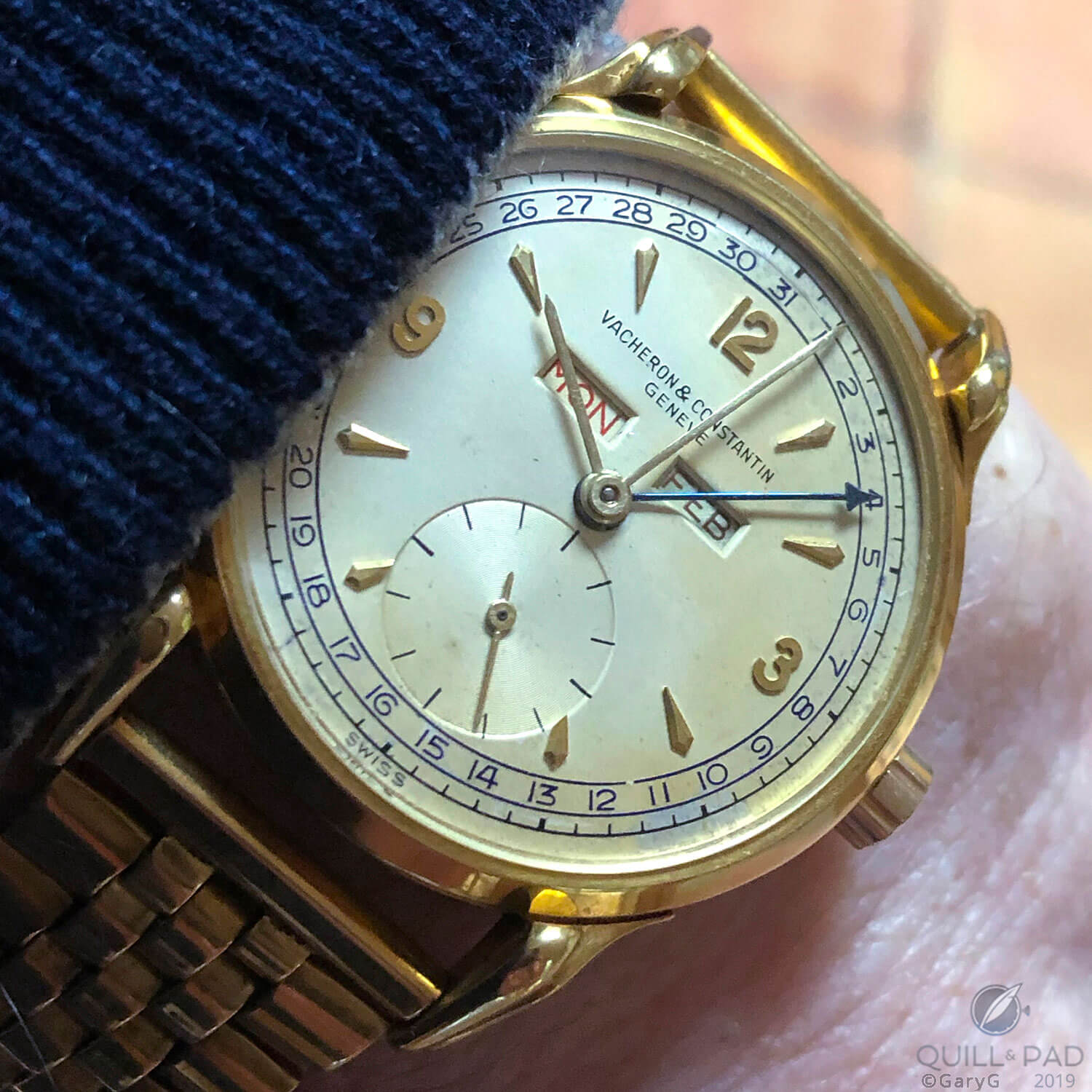
Vacheron & Constantin Reference 4560 from the 1950s
Is it Worth Investing in Vintage Watches?
Investing in vintage watches combines a passion for horology with the potential for financial gains. The attraction of vintage timepieces lies in their craftsmanship, unique designs, and historical significance. They are coveted items for collectors and enthusiasts but the decision to invest in vintage watches should be approached with careful consideration.
Vintage watches are not an investment game to enter into lightly and a true passion for watches is required to succeed in this market.
The main appeal of vintage watches is their scarcity, everyone wants something difficult to get their hands on. Many iconic models are no longer in production which drives their value up over time. Not only can vintage watches be a great financial investment as many appreciat over the years, but they are also a symbol of status.
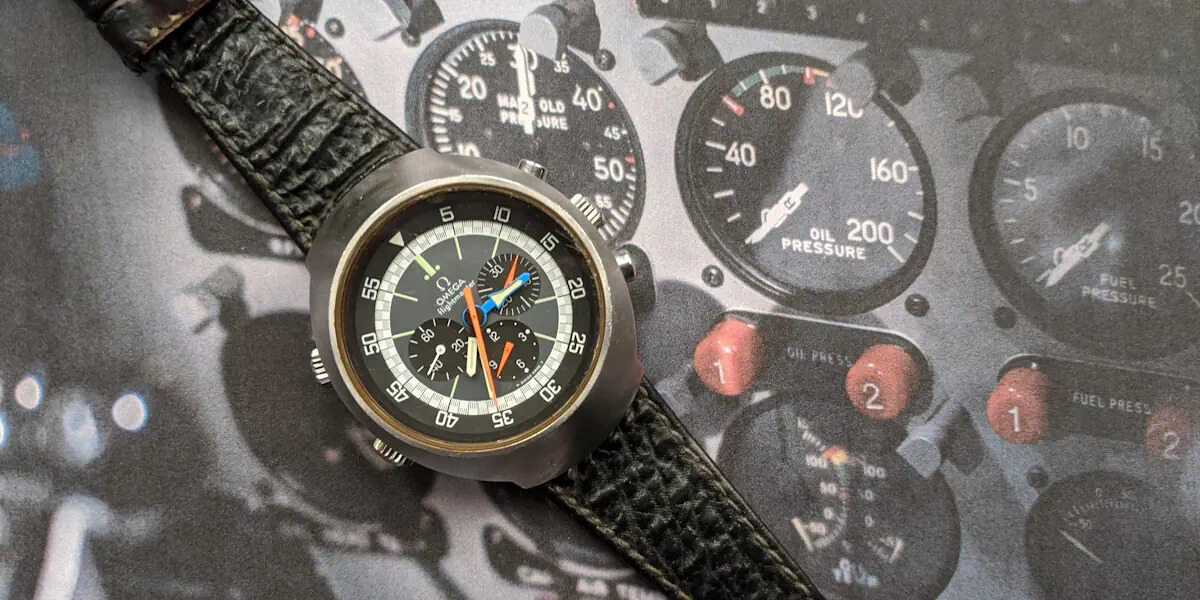
Vintage Omega Flightmaster
Those who are lucky enough to procure and finance vintage watches are highly envied by other collectors. Many collectors also find immense satisfaction in owning a piece of history, appreciating the craftsmanship, and wearing a watch with a story to tell.
Collectors often seek rare pieces, limited editions, or heritage watches and there is a high level of competition to obtain one.
————————————————————————————————————–
—————————————————————————————————–
While vintage watches can appreciate in value, it is extremely important to recognize that as with any investment, the market is unpredictable. It is ultimately a game of risk that may pay off well but not all vintage watches will see significant financial returns.
The investment horizon for vintage watches is also likely to be longer compared to more traditional investment avenues. The market is a long game that requires commitment and is not the way to quickly make some money. Reasons for getting into the world of vintage watches need to be genuine as it is not a get-rich-quick scheme.
Investing in vintage watches can be rewarding for those with a genuine, keen interest in horology. Beyond potential financial gains, the value of owning a piece of horological history and the joy of collecting can make vintage watches a worthwhile and fulfilling investment for enthusiasts and collectors alike.
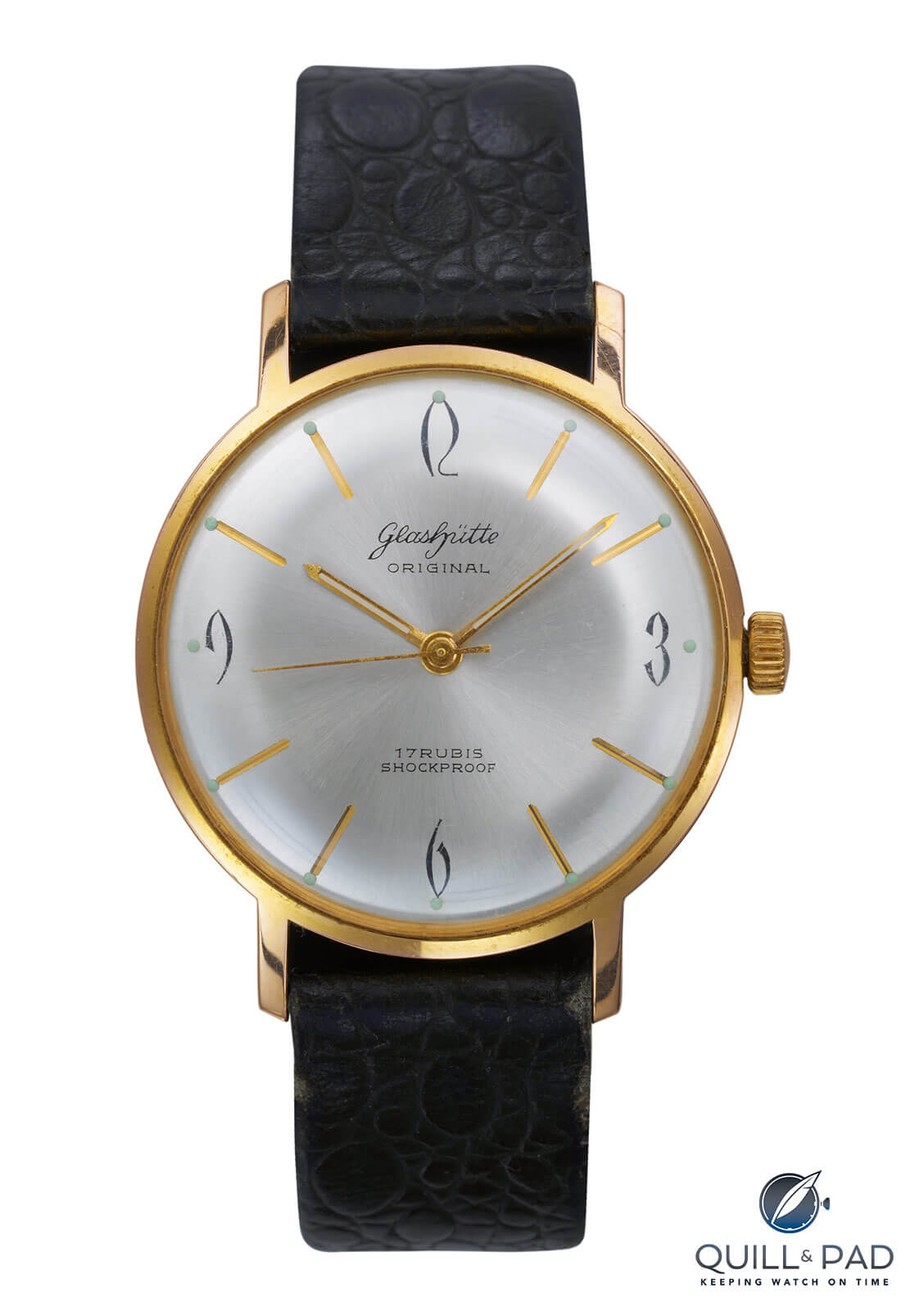
Vintage Glashutte Original GUB from 1960s
What to Look Out for When Buying Vintage Watches
When considering buying a vintage watch, there are many elements to look for in order to ensure that you are securing a quality timepiece. Whilst there are many genuine and honest traders in the market, there are also traders selling fakes or lying about the condition of the watch.
Knowing what to look out for when buying vintage watches is crucial to allow you to sift through and find genuine vintage horological gems for sale.
Alterations
The condition and originality of a vintage watch significantly impacts its investment potential: well-preserved watches with original components and minimal wear tend to command higher prices in the market.
Unless kept in a box, preserved and untouched for decades, vintage watches are going to look old, but this is where the beauty lies.
While the refurbished market was a hit for many years, in the 21st century, originality is key. Original timepieces with no alterations are much more valuable than refurbished, and this not only applies to the vintage watch market, it is common throughout the entire antiques market.
Every alteration from a repainted dial to a replacement hand instantly declines the value of the timepiece so the more original the better. Vintage watch sellers will market these original state timepieces as ‘unpolished’ or ‘all original’ making it easier to filter out anything you are not in search of.
—————————————————————————————————–
—————————————————————————————————–
The Strap
While the case and movements are undoubtedly the most valuable part of the timepiece, make sure not to forget about the strap. Many first-time investors pay extra attention to the watch face and case with little attention to the strap but the strap is part of the whole product. It is common for traders to sell a timepiece as all original or unpolished because the watch itself is unaltered but the strap may have been changed.
Look out for original straps and buckles when examining the timepiece. As with with the watch case, a metal strap might have some patina whilst a leather strap that has aged will have signs of decay such as cracks or splitting. Do not overlook the strap.
Fakes
In all industries, counterfeiting has exploded in the last few decades and fake items look more real than ever. The world of vintage watches is not immune to this and to an untrained eye, a fake vintage watch can look like the real deal. A red flag is the pristine condition of a timepiece as a vintage watch which has been around for over 25 years is likely to have some wear, tear, and patina.
As a watch ages, it is natural for the material to degrade and this is known as patina. It is extremely rare to find a vintage timepiece without a patina simply due to its age. However, counterfeits are unlikely have patina as it is difficultto fake so they will appear to be in excellent condition for sale value.
You should also be on the lookout for unsigned movements as brands typically sign each movement with the brand name. It is also important to look at the sellers if purchasing online. Pay attention to the seller’s location, whether they are selling large quantities of vintage watches, and also, if their price is significantly lower compared to other vintage watches listed.
—————————————————————————————————–
—————————————————————————————————–
Papers
Full documentation including original boxes and papers further enhances a vintage watch’s value. A watch with all of its papers, including packaging, warranty cards, owner manuals, and even sales receipts is called a full set and full sets can command substantially more than a partial set or a timepiece with no papers at all.
The documents for vintage watches are additional proof of a genuine vintage timepiece and are extremely valuable. Complete documentation is so coveted that alone it can receive a high price tag, even without its accompanying timepiece.
Yet again, papers and boxes can be counterfeit so be wary even of watches with a full set.
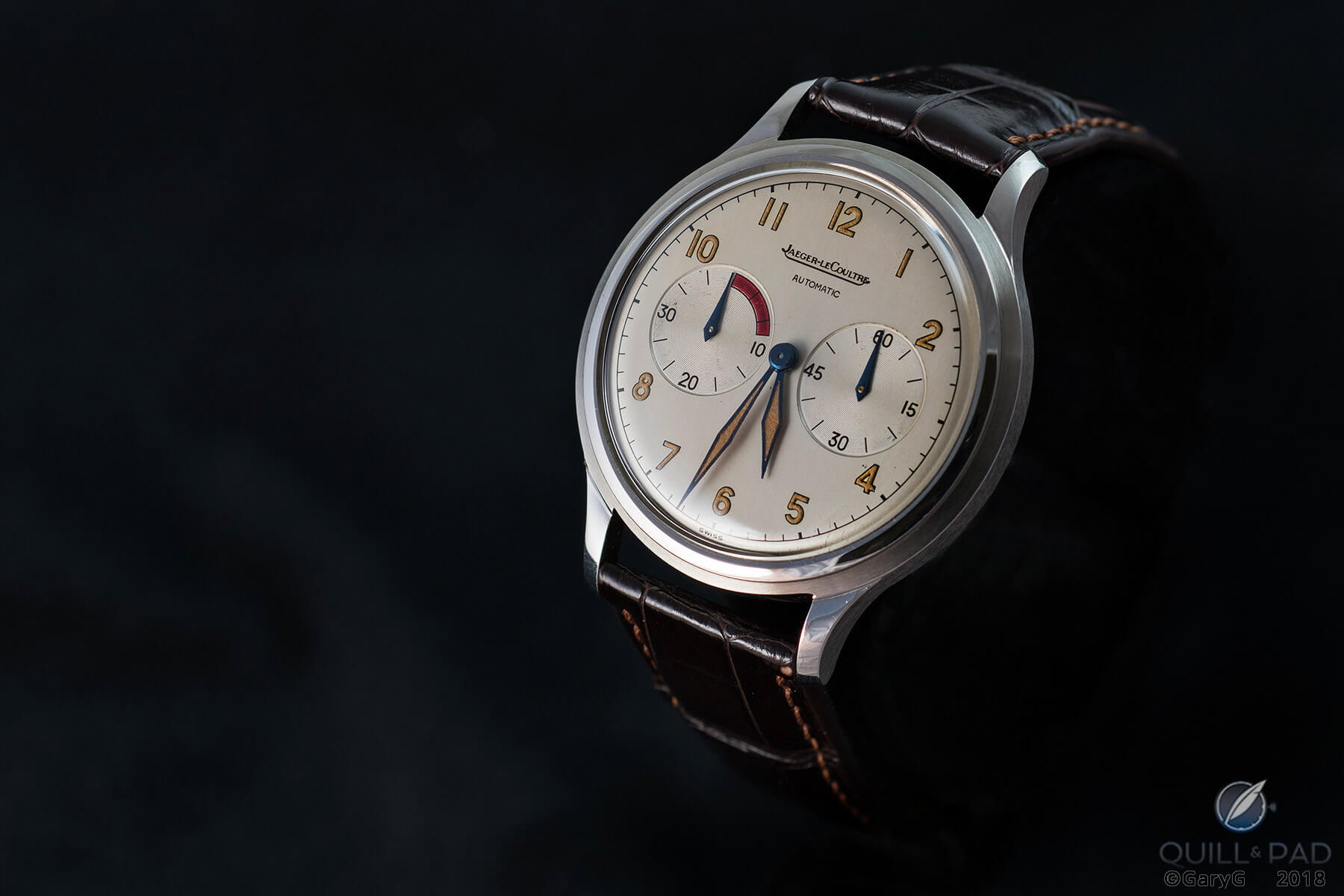
Vintage Jaeger-LeCoultre Futurematic
Service Records
Vintage timepieces with service records may also sell for more but a watch without service records should not to be overlooked. There are many watch collectors who do keep an accurate service record but this is rare. For most watches, service records simply do not exist with those that do have them too vague to tell the full story.
Everything from a quick check-up to a full reassembly can be classed as a service so even with service records, it is hard to understand the entire picture.
And be aware that service records can also be faked by dishonest sellers because they know that they can demand a higher price tag when sold with service records. Consider yourself extremely lucky to find a timepiece with a genuine and detailed service record.
—————————————————————————————————–
—————————————————————————————————–
Trends
Research is critical when considering investing in a vintage watch. Understanding all elements of the market, including specific models and brand reputation, is crucial. However, an additional thing to look at is trends. Is the current trend in vintage watches fleeting or is it something that will still be sought in decades to come?
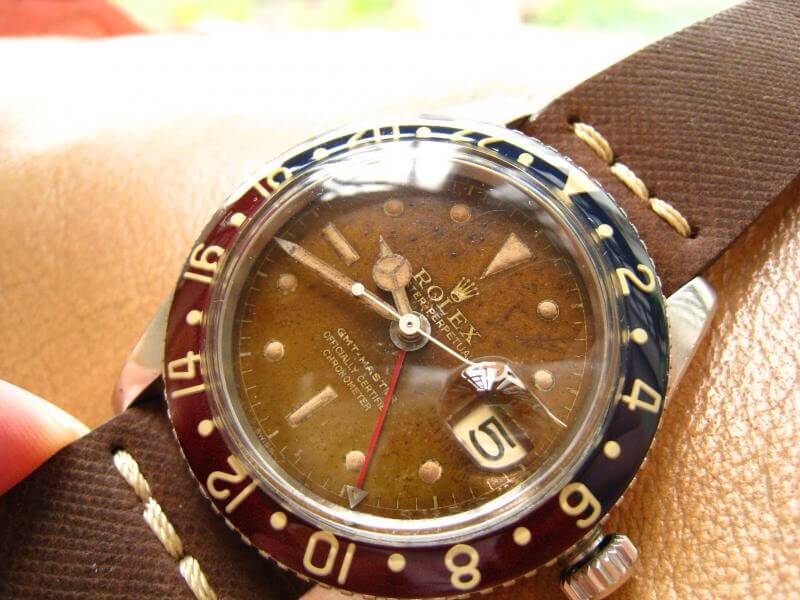
Rolex GMT 6542 with “tropical dial” (photo courtesy www.richpatina.tumblr.com)
As an example, aged lume is currently highly sought after in vintage watches. As the watch ages, the lume fades from its traditional green to more of a caramel or cream color. This look is so popular right now that multiple brands have introduced new models with cream lume to meet the current trend.
Yet tracing back the popularity of aged lume, it has spanned decades and is a trend that continues to be popular. This, however, is not the case for all trends.
Questions to Ask Before Buying a Vintage Watch
If you are interested in purchasing a vintage watch, especially if you are purchasing from an online seller, you need to ask questions in addition to keeping your eye out for important factors. While you may feel you are giving the seller the third degree, this is an investment in which you need to know every detail before putting your money into it.
Are all of the Parts Original?
This is a particularly important question when purchasing online as it is not as easy to examine for yourself. Even if a listing is described as ‘all original’, dig a little deeper as listing descriptions can be vague or not mention important details. Asking outright if any watch parts have been replaced allows you to help determine yourself if the timepiece is all original.it.
Has the Case Been Polished?
Especially if the watch face is suspiciously looking a little too pristine with no signs of patina, you need to be asking if the case has been polished. Whilst a polished case may have a more shiny and aesthetic appeal, the value of the watch instantly drops. Part of the appeal of vintage watches is that they look vintage so it is perfectly normal for them to lack a little luster.
A seller is aware that polishing drops the value of the timepiece so if it has been polished, unless you get an extremely open and honest seller, it is likely they will leave this out of the listing, letting the buyer come to their own conclusion.
—————————————————————————————————–
—————————————————————————————————–
When was the Last Service?
As a buyer, you want to ensure that the timepiece you are investing in has been well looked after. A sign of this is if it has been regularly serviced. Whilst actual service records can be hard to come by, vague or even fake, the seller should be able to tell you when the last service was and what happened at the service.
A seller who can provide you with details about the service is more likely to be trusted than one who dismisses the question.
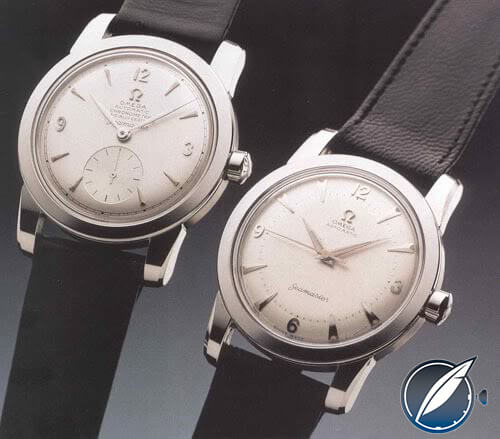
Vintage Omega Seamasters from 1948 and 1949
Is the Watch Keeping Accurate Time?
There is no way of knowing from a photograph whether a timepiece is actually working. Even if the seller mentions that it is still working, it may still be ticking, but is it operating with accuracy?
If purchasing in person, checking if the timepiece is accurate is a lot easier to do. Of course, it is not convenient to take a timegrapher with you to a potential sale but there is an amazing app called Timegrapher which listens to a watch and determines its accuracy.
Online, this is a little harder to check but you can always check if they have their own timegrapher readings. You could even recommend downloading the app, whilst it is additional work on the seller’s part, if they are a genuine seller who wants to make a sale it should be no bother.
Ask Yourself, do I Trust This Seller?
The watch may look great and sound great, but do you actually trust the seller? If there is a single red flag about the situation, that should raise your alarm bell to leave it and move onto another one. You should not put your hard-earned cash into a timepiece if you have even the slightest doubt about the person you are purchasing from.
By having a conversation with the seller and asking questions about the timepiece, you can typically get a vibe and a feeling as to whether you are looking at something genuine. A seller who is overly pushy or particularly evasive is a warning sign.
Some things to look out for are the location of the seller as a lot of counterfeit items are produced in China and India. Also, see if the seller has other listings. If they have a large amount of listings for vintage timepieces or if they are selling multiples of the same model, this is highly suspicious that they are selling fakes.
You also want to consider the seller’s intention behind the listing price. If it seems too good to be true, that’s probably because it is. If you feel like you have found yourself a bargain, it is not always, but most likely, because the timepiece is either counterfeit or the condition is not as described.
—————————————————————————————————–
—————————————————————————————————–
Warning Signs for Buying Vintage Watches FAQ
Are vintage watches worth money?
Every vintage watch has a price tag but the value of your investment is determined by a lot of factors. Investment into the vintage watch market is a risk like any investment in which the value of the timepiece can go up and down.
Is a 20-year-old watch vintage?
A watch is typically considered vintage if it is 25 years or older. Before a watch reaches the age of 25, it is classified as pre-owned. The terminology ‘used’ is not assigned to watches, pre-owned is a much more favorable term in the world of horology.
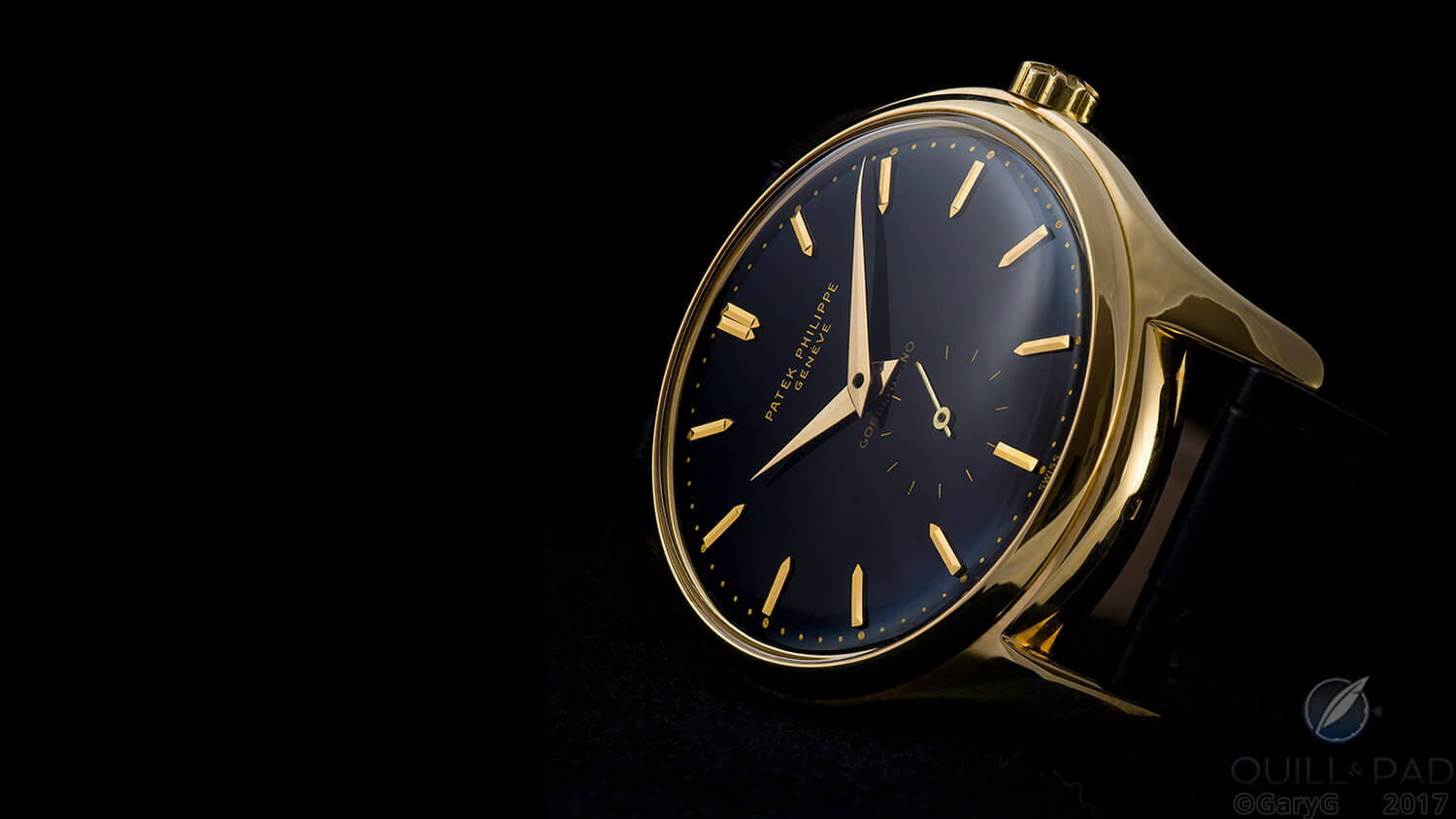
Vintage treasure: Patek Philippe Reference 2526 with black “Gobbi Milano” dial
Which watch goes up in value the most?
The value of any watch is not guaranteed but Rolex and Patek Phillipe are most likely to hold and appreciate their value. However, there are many unique and rare timepieces from other brands which have dramatic increases in value.
What is the rarest watch ever?
The Patek Philippe Grandmaster Chime is considered by many in the industry to be the rarest. One-of-a-kind, this timepiece is the most expensive to ever be made with 20 complications, 6 patents, and over 7 years of work. It sold at auction in 2019 for $31.19million.
If you think I’ve missed anything or have anything to add, please comment below.
* You can read more articles by Maz Panayi targeted for beginner watchmakers at https://watchmakingtools.com/author/mazp/ and about watchmaking tools at https://watchmakingtools.com/tools/
You might also enjoy:
How a Mechanical Watch Works with Simple to Understand Animations
How Watches are Made – the Engineering of Watchmaking by John McGonigle (Video)
‘Time Piece’ Short Film Featuring Philippe Dufour And Vianney Halter: If You Only Watch One Short Film On Independent Watchmaking, Watch This One
Here’s Why You Should Learn To Service Your Own Watch
Leave a Reply
Want to join the discussion?Feel free to contribute!

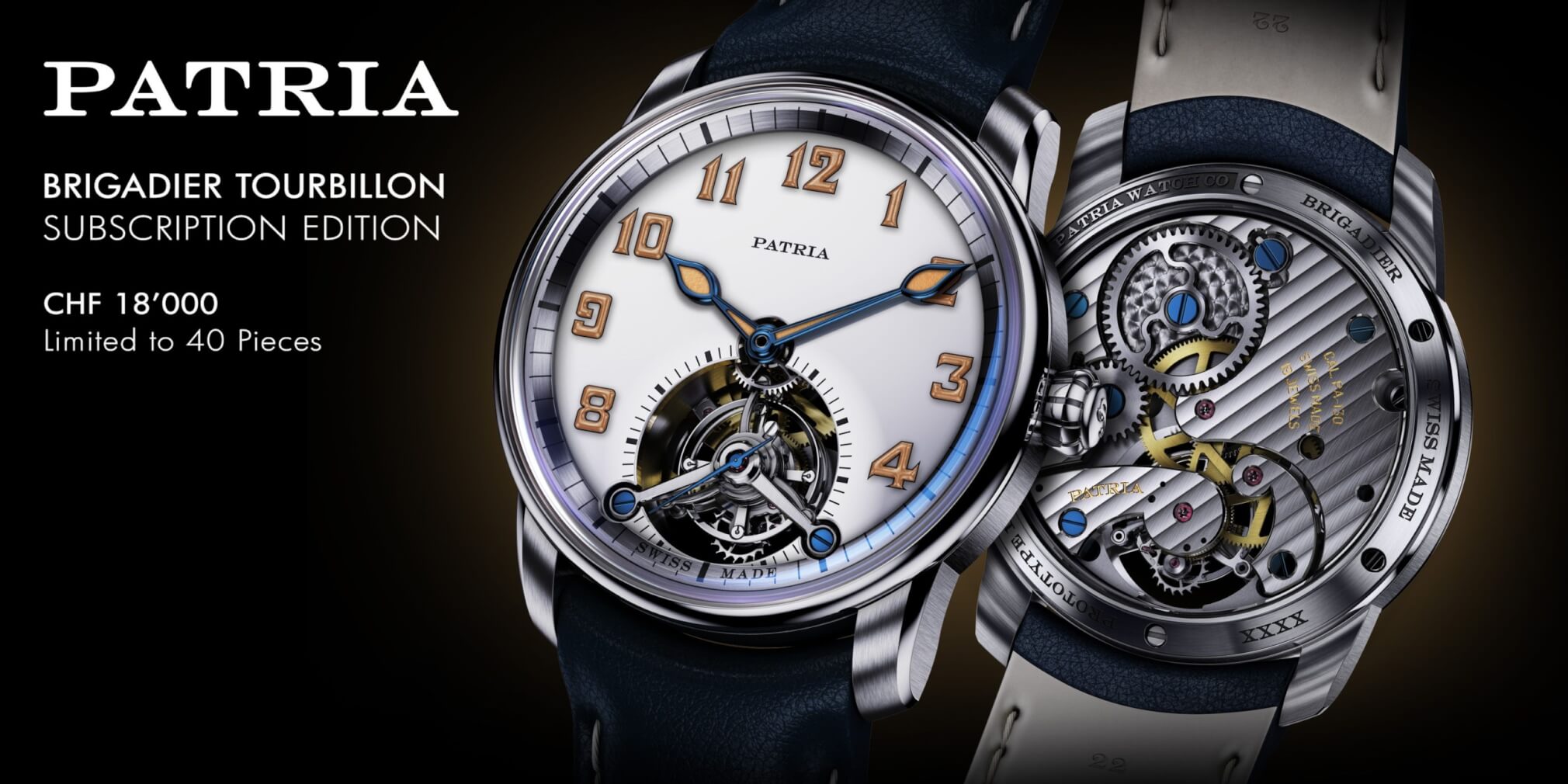
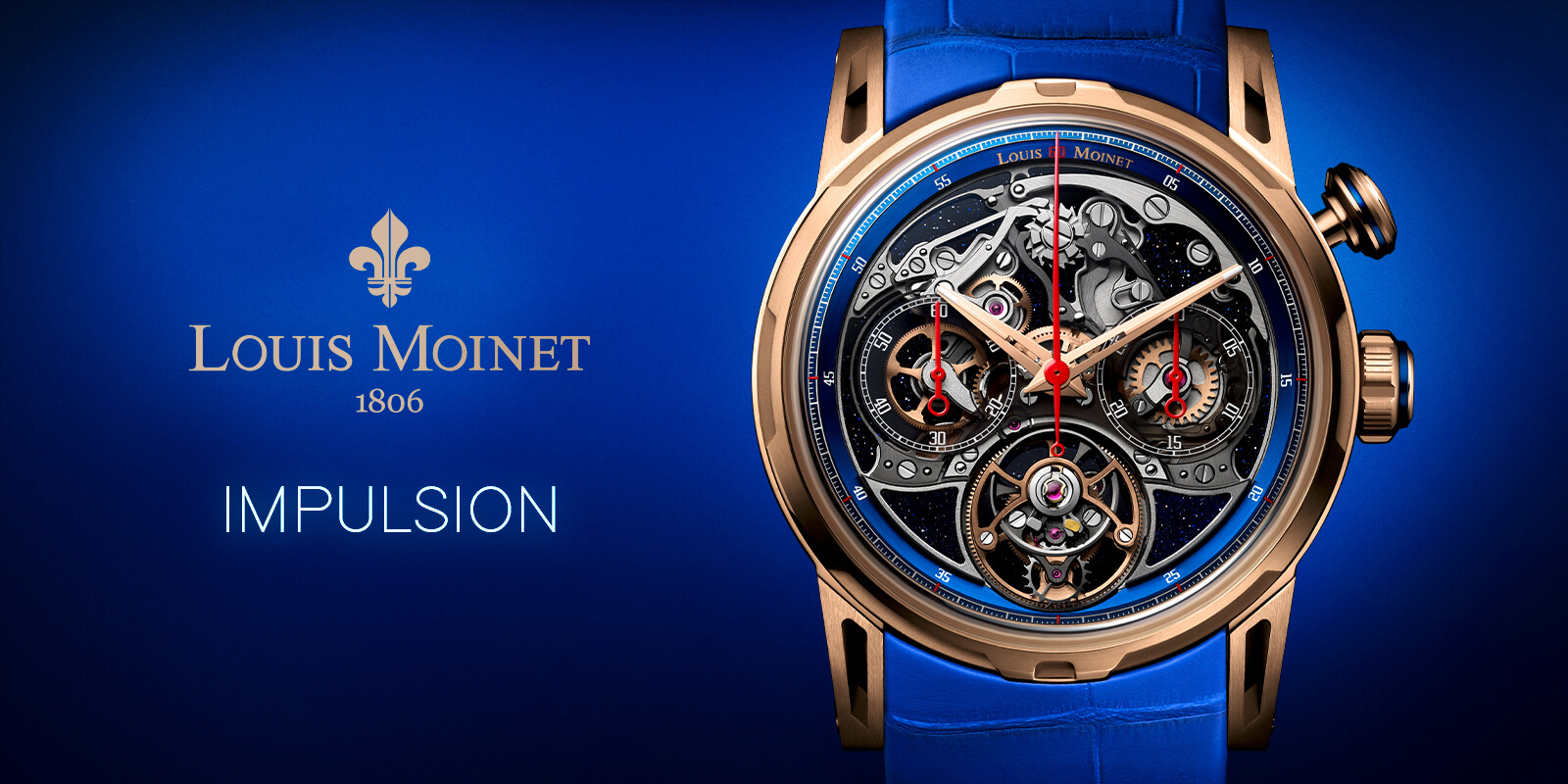


There’s plenty of good advice here (plus some nonsense, see Papers) but the writer has missed the most important – watches are NOT investments and this goes double for vintage.
Aside from the usual ‘buy what you like AND can afford’, I’d add reset your expectations for vintage. That doesn’t mean lower them but be mindful things change over time.